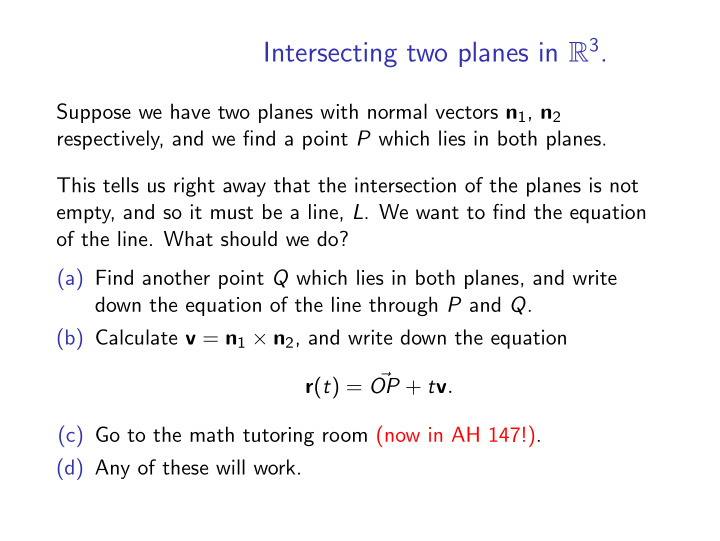



Intersecting two planes in R 3 . Suppose we have two planes with normal vectors n 1 , n 2 respectively, and we find a point P which lies in both planes. This tells us right away that the intersection of the planes is not empty, and so it must be a line, L . We want to find the equation of the line. What should we do? (a) Find another point Q which lies in both planes, and write down the equation of the line through P and Q . (b) Calculate v = n 1 × n 2 , and write down the equation r ( t ) = ⃗ OP + t v . (c) Go to the math tutoring room (now in AH 147!). (d) Any of these will work.
Sketching the domain of a function Consider the function f : ( x , y ) ↦→ x ln( y 2 − x ) . Which of the following best describes the domain of f ? y (a) I don’t know. (b) Everything to the right of the green curve, including the curve. x (c) Everything to the left of the green curve, not including the curve. (d) Everything except the green curve.
Sketching the contour map and the graph of a function of two variables Let f ( x , y ) = 2 x 2 + y 2 . Sketch the contour map by looking at the level sets for z = − 1 , 0 , 1 , 2. Now sketch the graph. Compare with your neighbour. Do your pictures agree? (a) Yes. (b) No. (c) We can’t agree. Try to convince each other and figure out which is correct. Change your answer to (a) when you agree, or to (c) if you get stuck.
Contour maps and slope Suppose that we look at the level sets for a list of choices of k which are evenly spaced (e.g. 0 , 1 , 2 , 3 , 4 , . . . ), and suppose that when we draw the contour map we see that the lines are very far apart in a certain region. What can we say about the slope of the function in this region? It is (a) positive. (b) negative. (c) large (in absolute value). (d) small (in absolute value).
Example in even more dimensions: Hopf fibration Here’s a video. Video
Recommend
More recommend